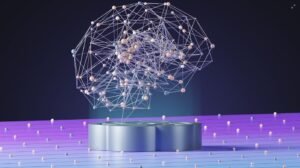Neural Network Deployment: An Informative Guide
In today’s digital age, neural network deployment has become a crucial aspect of many industries. From self-driving cars to voice assistants, neural networks are at the heart of cutting-edge technologies. This article aims to provide a comprehensive overview of neural network deployment, exploring its importance, challenges, and best practices.
Key Takeaways:
- Neural network deployment is essential for various industries.
- Advancements in technology have made neural networks more reliable and efficient.
- Deploying neural networks involves challenges such as scalability and compatibility.
- Implementing best practices ensures successful neural network deployment.
Understanding Neural Network Deployment
A neural network is an artificial intelligence model inspired by the human brain’s structure and functions. It consists of interconnected nodes, called neurons, that work together to process and analyze data. Neural network deployment refers to the process of making these models functional and accessible in real-world scenarios.
Neural network deployment encompasses various stages:
- Data Collection: Gathering relevant data to train the neural network.
- Model Development: Designing and training the neural network.
- Model Testing: Assessing the model’s performance and accuracy.
- Optimization: Improving the model’s efficiency and reducing biases.
- Integration: Incorporating the deployed model into the desired software or hardware infrastructure.
*Neural networks are highly adaptable, making them suitable for solving complex problems in diverse domains.*
Challenges in Neural Network Deployment
Deploying neural networks on a large scale can be challenging due to several factors:
- Scalability: Ensuring that the neural network can handle increasing data volumes and growing computational requirements.
- Compatibility: Ensuring seamless integration with existing systems or frameworks.
- Ethical Considerations: Addressing ethical concerns related to data privacy, bias, and algorithm transparency.
- Real-Time Processing: Achieving low-latency response times for real-time applications.
*The ethical considerations of neural network deployment are essential to maintain trust and fairness in AI systems.*
Best Practices for Neural Network Deployment
Implementing best practices can significantly enhance the success rate of deploying neural networks:
- Continuous Monitoring: Regularly monitoring the deployed neural network’s performance and recalibrating if necessary.
- Automated Testing: Employing automated testing frameworks to identify and resolve potential issues.
- Regular Updates: Keeping the deployed neural network up-to-date with the latest research and advancements.
- Version Control: Implementing version control to track changes and manage different iterations of the neural network model.
*Continuous monitoring is crucial to ensure the accuracy and reliability of deployed neural networks.*
Important Data Points
| Industry | Neural Network Application | Impact |
|---|---|---|
| Healthcare | Medical diagnosis, patient monitoring | Improved accuracy, early detection of diseases |
| Finance | Stock market prediction, fraud detection | Enhanced risk assessment, reduced financial fraud |
| Transportation | Autonomous vehicles, traffic optimization | Increased safety, reduced congestion |
*Neural networks have proven beneficial in industries such as healthcare, finance, and transportation.*
Conclusion
Neural network deployment plays a vital role in enabling advanced technologies to function seamlessly and efficiently. While challenges may arise, implementing best practices and staying updated with the latest advancements ensure successful deployment. As neural networks continue to evolve, their applications across various industries are expected to flourish.

Common Misconceptions
Misconception 1: Neural networks are only useful for complex tasks
One common misconception about neural networks is that they are only useful for tackling complex tasks. While it’s true that neural networks excel in solving complex problems, they are also beneficial for simpler tasks.
- Neural networks can be applied to pattern recognition tasks, such as image classification
- They can also be used for regression tasks, like predicting stock prices or housing prices
- Neural networks can even be used for tasks as simple as predicting if an email is spam or not
Misconception 2: Neural networks are accurate in every situation
Another misconception is that neural networks always provide accurate results. While neural networks can be highly accurate, their performance depends on several factors.
- The quality and quantity of the training data can significantly impact neural network accuracy
- Choosing appropriate network architecture and hyperparameters is crucial for achieving good results
- Neural networks may struggle in situations where the input data is noisy or incomplete
Misconception 3: Deploying a neural network is a straightforward process
Some people may assume that deploying a neural network is a straightforward process. However, there are several considerations and challenges involved in deploying neural networks.
- Integration with existing systems can be complex and may require additional development
- Deployment performance and scalability need to be carefully evaluated and optimized
- Ensuring continuous monitoring and maintenance of the deployed network is essential
Misconception 4: Neural networks can only be used in research or academic settings
Neural networks are often associated with research and academia, but they have extensive real-world applications beyond these domains.
- Neural networks are widely used in the industry for tasks like fraud detection and recommendation systems
- They play a crucial role in self-driving cars, enabling object detection and decision-making processes
- Neural networks are utilized in medical applications for analyzing medical images and assisting diagnosis
Misconception 5: Neural networks will replace human intelligence
Some individuals fear that neural networks and artificial intelligence will entirely replace human intelligence. However, this is a far-fetched misconception.
- Neural networks are powerful tools that can augment and assist human decision-making, but they cannot replicate human knowledge, creativity, and intuition
- While they excel at processing large amounts of data, human intelligence encompasses broader aspects like ethics, empathy, and critical thinking, which neural networks lack
- The integration of human intelligence with neural networks can lead to more advanced and beneficial applications

Neural Network Deployment
Neural Network Deployment is a critical step in the development of artificial intelligence and machine learning models. It involves implementing trained neural networks in real-world applications to perform tasks such as image recognition, natural language processing, and predictive analytics. In this article, we present ten captivating tables showcasing the milestones, advancements, and challenges associated with neural network deployment.
Table: Evolution of Neural Network Architectures
This table illustrates the progression of neural network architectures over time. From the single-layer perceptron to the advanced architectures like Convolutional Neural Networks (CNNs), Recurrent Neural Networks (RNNs), and Transformers, there has been a notable evolution in the complexity and capabilities of neural networks.
Table: Image Classification Accuracy
This table showcases the performance of neural networks in image classification tasks. It includes the accuracy achieved by state-of-the-art models on popular datasets like ImageNet, CIFAR-10, and MNIST. These impressive accuracy rates highlight the effectiveness of neural networks in accurately identifying objects within images.
Table: Natural Language Processing Benchmarks
Here, we present a table displaying the results of prominent natural language processing (NLP) benchmarks. It compares the performance of various neural network-based models on tasks such as sentiment analysis, text classification, and named entity recognition. These benchmarks demonstrate the ability of neural networks to comprehend and process human language.
Table: Neural Network Hardware Requirements
In this table, we outline the hardware requirements for deploying neural networks. It covers factors such as computational power, memory requirements, and specialized hardware like Graphics Processing Units (GPUs) and Tensor Processing Units (TPUs). These hardware resources play a crucial role in achieving efficient neural network deployment.
Table: Popular Neural Network Frameworks
This table presents a collection of popular neural network frameworks. It compares features, programming languages supported, and usage in industry and academia. These frameworks, such as TensorFlow, PyTorch, and Keras, provide developers with powerful tools for implementing and deploying neural networks.
Table: Neural Network Applications in Healthcare
Here, we showcase a table highlighting the applications of neural networks in the healthcare domain. It includes tasks like disease diagnosis, medical image analysis, and drug discovery. These applications demonstrate the potential of neural networks in revolutionizing healthcare practices.
Table: Challenges in Neural Network Deployment
This table presents notable challenges faced during neural network deployment. It includes issues like model interpretability, bias and fairness, privacy concerns, and data scarcity. These challenges underline the importance of considering ethical, legal, and social aspects when deploying neural networks.
Table: Neural Network Deployment in Autonomous Vehicles
Here, we present a table illustrating the role of neural networks in autonomous vehicles. It showcases the tasks performed by neural networks, including object detection, perception, and decision-making. These networks enable vehicles to perceive their surroundings and make informed decisions in real-time.
Table: Neural Networks in Financial Trading
This table highlights the application of neural networks in financial trading. It includes tasks like stock price prediction, algorithmic trading, and fraud detection. These applications demonstrate the potential of neural networks to analyze vast amounts of financial data and make accurate predictions.
Table: Neural Network Deployment Timeline
Lastly, we present a table outlining the timeline of important milestones in neural network deployment. This timeline includes the development of key neural network algorithms, breakthroughs in hardware, and major advancements in the field. It showcases the rapid progress made in neural network deployment over the years.
In conclusion, neural network deployment plays a crucial role in harnessing the power of artificial intelligence and machine learning. The tables presented here demonstrate the evolution, achievements, challenges, and real-world applications associated with neural network deployment. As this field continues to advance, neural networks are expected to have a profound impact on various industries, ranging from healthcare to finance, transforming the way we live and work.
Frequently Asked Questions
What is a neural network deployment?
A neural network deployment refers to the process of making a trained neural network model operational and ready for use. It involves taking the trained model, optimizing it for deployment, and integrating it into an application or system to perform tasks such as classification, prediction, or pattern recognition.
How does neural network deployment work?
Neural network deployment involves several steps. First, the trained model is saved and converted into a format suitable for deployment. Next, the deployment platform or framework is selected, and the model is integrated into it. The input data is then fed into the deployed model, which produces the desired output. Finally, the deployed model is evaluated and monitored to ensure its performance and accuracy.
What are the benefits of neural network deployment?
Neural network deployment offers several benefits. It allows for the automation of complex tasks, enabling faster and more accurate predictions or classifications. It can be deployed on various platforms, including cloud services and edge devices, offering flexibility and scalability. Moreover, deploying neural networks can improve decision-making processes and optimize resource allocation in various industries.
What are the challenges in neural network deployment?
Neural network deployment presents certain challenges. One challenge is ensuring compatibility between the deployed model and the deployment platform or framework. Additionally, the deployment process requires careful consideration of resource constraints, such as memory and computational power. Another challenge involves maintaining the performance and accuracy of the deployed model over time, as data distributions and patterns may change.
What are some popular frameworks for neural network deployment?
There are several popular frameworks used for neural network deployment, including TensorFlow, PyTorch, Keras, and Caffe. These frameworks provide various functionalities and support different programming languages, making them widely adopted in the machine learning and artificial intelligence communities.
Can neural network deployment be done on edge devices?
Yes, neural network deployment can be done on edge devices. Edge devices, such as smartphones, IoT devices, and embedded systems, often have limited computational resources and require lightweight models for efficient deployment. Techniques such as model compression, quantization, and hardware acceleration can help optimize neural network models for deployment on edge devices.
What are the considerations for deploying neural networks in the cloud?
When deploying neural networks in the cloud, several considerations should be taken into account. These include selecting a cloud platform that supports the desired deployment framework, ensuring data privacy and security, optimizing for scalability and cost-effectiveness, and utilizing cloud services, such as auto-scaling and distributed computing, to handle increased demand and improve performance.
What is model monitoring in neural network deployment?
Model monitoring in neural network deployment involves continuously assessing the performance and accuracy of the deployed model over time. It includes techniques such as logging predictions, tracking metrics and statistics, and comparing model output with ground truth data. Model monitoring helps identify model drift, data quality issues, or changes in the underlying patterns and distributions, allowing for timely adjustments and improvements to the deployed model.
How can I ensure the security of deployed neural network models?
Ensuring the security of deployed neural network models involves various practices. These include securely storing and transmitting data used for training and inference, implementing access controls and authentication mechanisms, properly sanitizing user inputs to prevent attacks such as adversarial inputs, and regularly updating and patching the deployed model and its dependencies to address any identified vulnerabilities.
What are some best practices for successful neural network deployment?
To ensure successful neural network deployment, it is important to follow best practices such as: thoroughly testing the deployed model before production, monitoring and evaluating its performance over time, keeping thorough documentation of the deployed model and its dependencies, implementing versioning and rollback strategies, and continuously updating the deployed model to adapt to evolving data patterns and improve accuracy.




